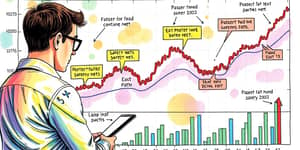
As global challenges intensify, the need for investment strategies that balance profit with positive impact has never been more critical. Integrating ESG scoring into fund selection helps align portfolios with long-term sustainability goals and improving overall risk-adjusted returns.
ESG stands for Environmental, Social, and Governance—three pillars that evaluate a company’s performance beyond financial metrics.
By capturing both qualitative and quantitative data, ESG helps investors identify hidden risks and opportunities that traditional analysis might miss.
Integrating ESG criteria into fund selection serves multiple strategic objectives:
Institutional and retail interest in ESG funds continues to surge, fueled by mounting evidence that responsible practices can drive sustainable value creation over time.
Fund selectors can follow a structured process to integrate ESG effectively:
This systematic approach ensures that ESG becomes an integral part of decision-making rather than a checkbox exercise.
Leading providers such as LSEG, Morningstar, and Moody’s ESG Solutions use data-driven frameworks to quantify sustainability performance. Their methodologies typically involve:
Understanding these nuances allows investors to compare funds accurately and tailor weightings to match their risk tolerance and impact objectives.
Fund managers play a pivotal role in delivering on ESG commitments:
Robust engagement with portfolio companies not only mitigates downside risk but also fosters innovation in sustainable solutions.
Despite growing momentum, ESG integration faces obstacles that fund selectors must navigate:
Data limitations often arise from inconsistent reporting standards and self-reported metrics, which can hinder comparability.
To address this, combine multiple data sources and perform your own materiality assessment to validate key figures.
Attribution of performance can be complex, as ESG factors intertwine with market trends and active management decisions. Maintaining a transparent methodology and clear documentation helps stakeholders understand the impact of ESG on returns.
Firms that embrace ESG scoring in fund selection often experience heightened investor confidence and stronger brand reputation. For example, portfolios tilted toward high-ESG-scoring companies have shown greater resilience during market downturns.
Regulatory frameworks like the EU’s Sustainable Finance Disclosure Regulation (SFDR) and the Task Force on Climate-related Financial Disclosures (TCFD) are driving higher disclosure standards, which will improve data quality and comparability over time.
As global capital continues to flow into ESG-aligned funds, the financial industry is poised to innovate new products, from climate-focused strategies to community investment vehicles that deliver measurable social impact.
Integrating ESG scoring into fund selection is both a strategic imperative and an ethical opportunity. By embracing systematically incorporating ESG information, investors can navigate complex risks, respond to stakeholder demands, and contribute to a more sustainable future.
Whether you are a seasoned allocator or just beginning your ESG journey, adopting a structured, transparent approach to ESG integration will help you build resilient portfolios that generate long-term value for investors and society alike.
References













